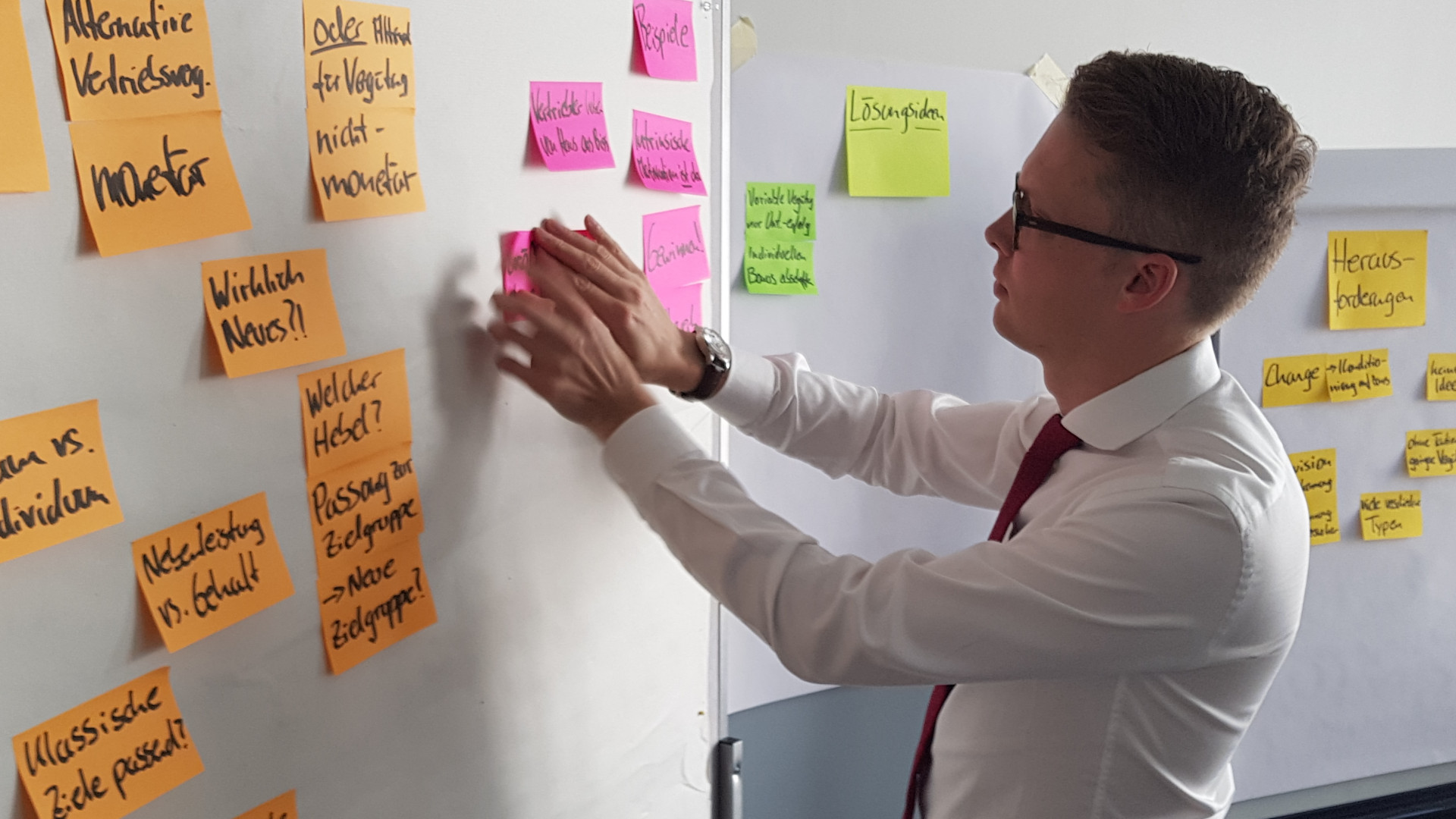Scrum, design thinking, hackathons – new, agile working methods are increasingly popular in HR projects and elsewhere. What opportunities and challenges come with them? And what should HR professionals be aware of when using them? hkp.com spoke to Leon Jacob and Nils Meier.
Agile working methods – what does that mean exactly?
Nils Meier: Agile working methods are an alternative to the classical linear approach to project management, also known as the waterfall model. With agile, individual project steps often proceed more directly after each other and in a more iterative way.
Leon Jacob: For projects, agile means first and foremost greater flexibility. The step-by-step, open-ended approach enables firms to react swiftly to new customer requirements or changes in the overall situation. Ultimately, the results of the project are better aligned to customer needs.
Agile methods are, by definition, agile. Is that their only advantage?
Nils Meier: No. Companies can frequently develop initial solutions much more quickly thanks to the use of agile. After an initial sprint, project teams generally have a prototype for a minimum viable product, or MVP. Instead of spending weeks or months working on a detailed technical concept, agile projects focus on the question of what the smallest possible product would like that gives the customer added value. The approach is also more open to innovative solutions.
That sounds promising. So, the days of classical project management are over?
Leon Jacob: Not quite. The choice of methods still depends on the project's broader framework. Generally, the more the requirements of the solution change during the course of the project, the more likely it is that agile working methods will be preferable.
Nils Meier: At the same time, the question of whether to use agile working methods is not necessarily a yes-or-no decision. Firms can combine traditional project management with agile. After two or three initial sprints, projects can then continue with a classical project management approach.
Where does agile come from?
Nils Meier: Agile originated in software development and lean management. It was noticed early on that traditional methods for developing new solutions could no longer keep up with rapidly changing customer requirements.
Leon Jacob: The acceleration of the market and competitive environment is now seen in almost all sectors. Companies are searching for ways and the means to become faster and more innovative in their work. "Agile" is the umbrella term for the various frameworks and methods that can be used for this purpose.
Where can companies best use agile – what do you recommend?
Leon Jacob: Agile is particularly promising in projects which involve major change. Agile approaches benefit from interdisciplinary teams. They can also be used by large groups, and to some extent even virtually. They create the perfect conditions for approaching a problem from different perspectives and developing solutions that are acceptable for the majority right from the outset, as everyone is invited to get involved.
Can firms also exploit these advantages in their HR projects?
Nils Meier: Absolutely. Even large corporations are now using agile working methods to restructure their performance management or other HR processes, for example. Employees from different parts of the organization attend a hackathon lasting two to three days to jointly develop ideas and a prototype. Concrete solutions require very little time using this method.
Leon Jacob: Agile is also good for efficiency programs. One German company asked everyone in a specific division to develop innovative ideas about how to boost the division's efficiency – in plain terms, how to reduce costs while maintaining the same standards. The solutions for roles and processes developed were much more radical than the traditional approach of making cuts and getting rid of every other coffee machine.
That sounds very promising. Is this something that every company will find simple to implement?
Nils Meier: The basic requirement for agile is an openness to new ideas. Agile working methods often involve specific processes and rules – which need to be accepted and adhered to in order for the methods to be really effective.
Leon Jacob: The company also needs to be willing to accept fresh ideas and approaches. Agile often leads to solutions that management had never imagined in the past.
Trends come and go. Is agile simply the latest fashion – here today, gone tomorrow?
Leon Jacob Agile is certainly a trend at the moment. Of course, research into organizations has been working on the question of how organizations can adapt flexibly to new environments for decades. We have the concept of the "learning organization", for example. However, many of the methods that are currently gaining ground and which can help organizations find customer-centric, innovative solutions are quite new. We believe that scrum, design thinking, hackathons, and the like will be around for some time yet.
Mr. Jacob, Mr. Meier, thank you very much!

You would like to know more about this topic?
Arrange a (telephone) appointment with Leon Jacob




